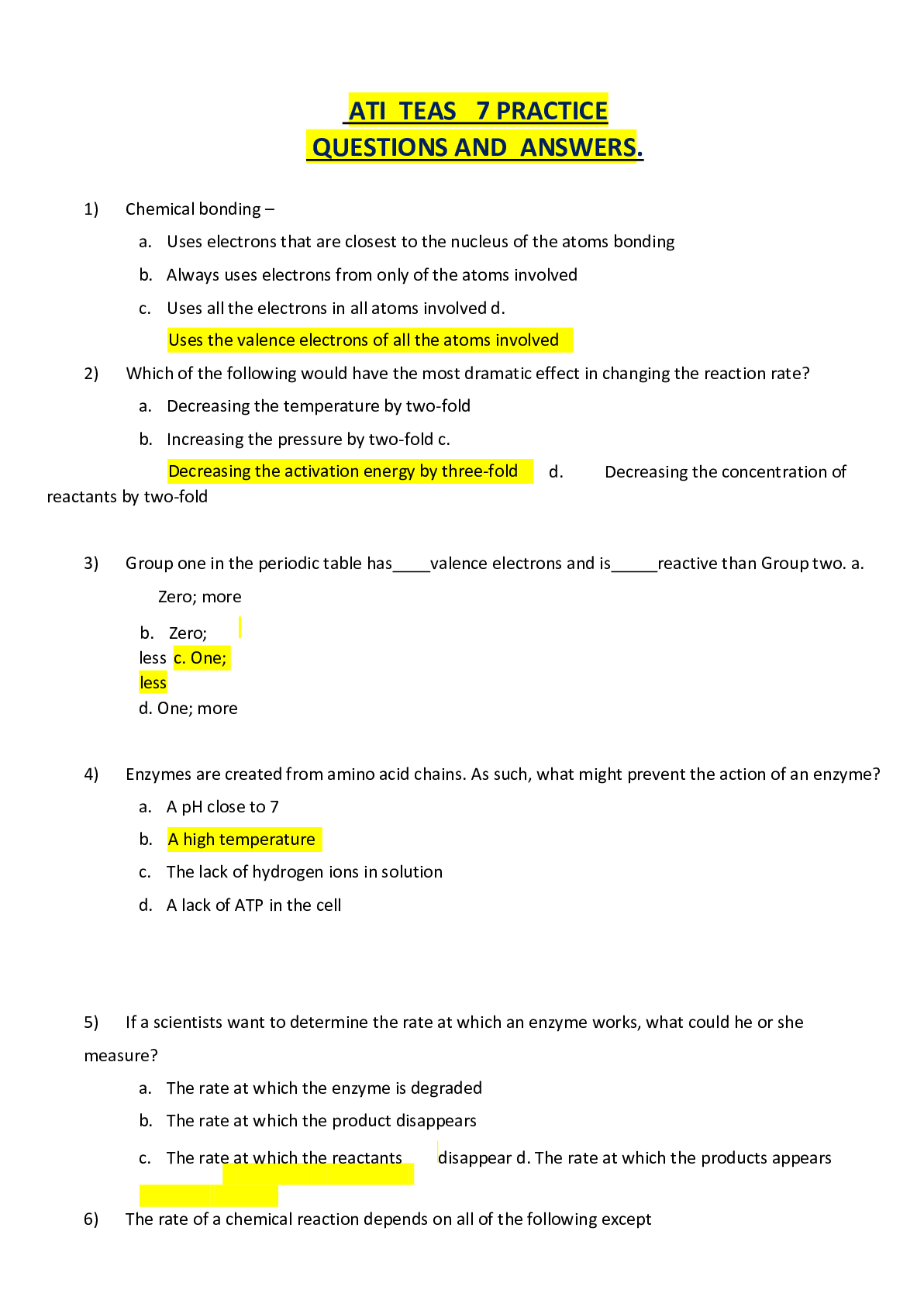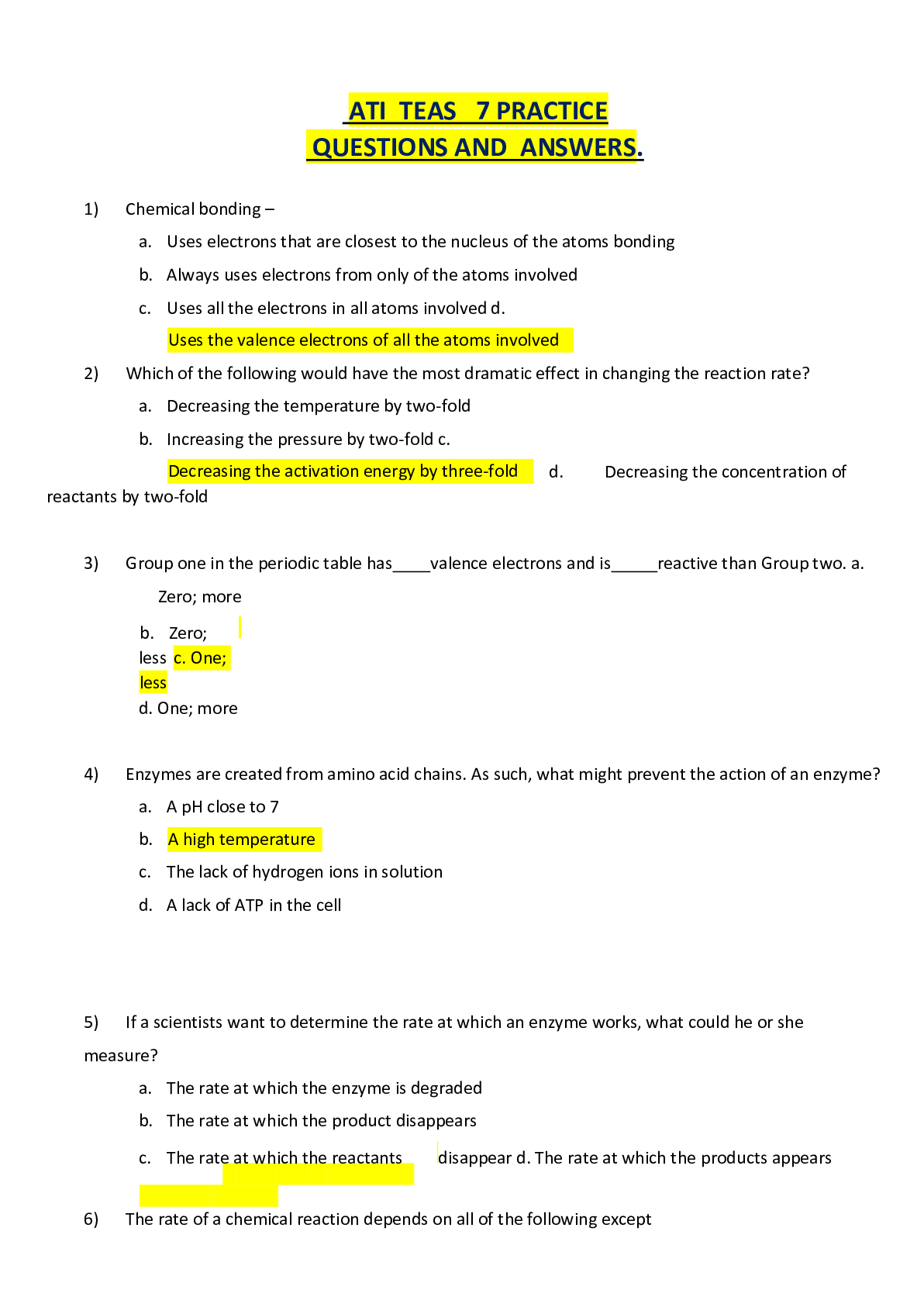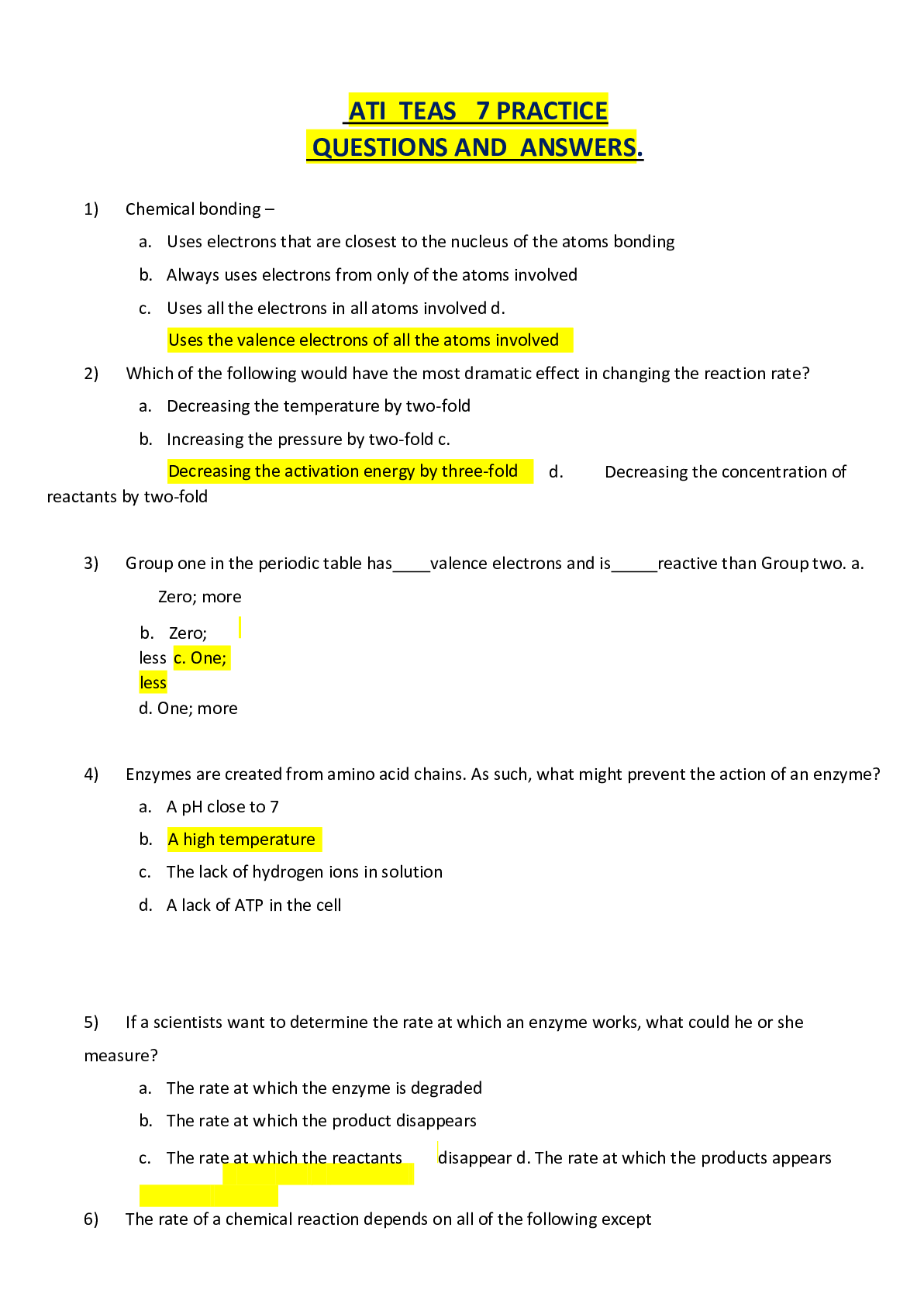ATI TEAS 7 PRACTICE QUESTIONS AND ANSWERSLAtest
Document Content and Description Below
1) Chemical bonding – a. Uses electrons that are closest to the nucleus of the atoms bonding b. Always uses electrons from only of the atoms involved c. Uses all the electrons in all atoms involv... ed d. Uses the valence electrons of all the atoms involved 2) Which of the following would have the most dramatic effect in changing the reaction rate? a. Decreasing the temperature by two-fold b. Increasing the pressure by two-fold c. Decreasing the activation energy by three-fold d. Decreasing the concentration of reactants by two-fold 3) Group one in the periodic table has valence electrons and is reactive than Group two. a. Zero; more b. Zero; less c. One; less d. One; more 4) Enzymes are created from amino acid chains. As such, what might prevent the action of an enzyme? a. A pH close to 7 b. A high temperature c. The lack of hydrogen ions in solution d. A lack of ATP in the cell [Show More]
Last updated: 2 years ago
Preview 1 out of 48 pages

Buy this document to get the full access instantly
Instant Download Access after purchase
Buy NowInstant download
We Accept:

Reviews( 0 )
$11.00
Can't find what you want? Try our AI powered Search
Document information
Connected school, study & course
About the document
Uploaded On
Jan 12, 2023
Number of pages
48
Written in
Additional information
This document has been written for:
Uploaded
Jan 12, 2023
Downloads
0
Views
79

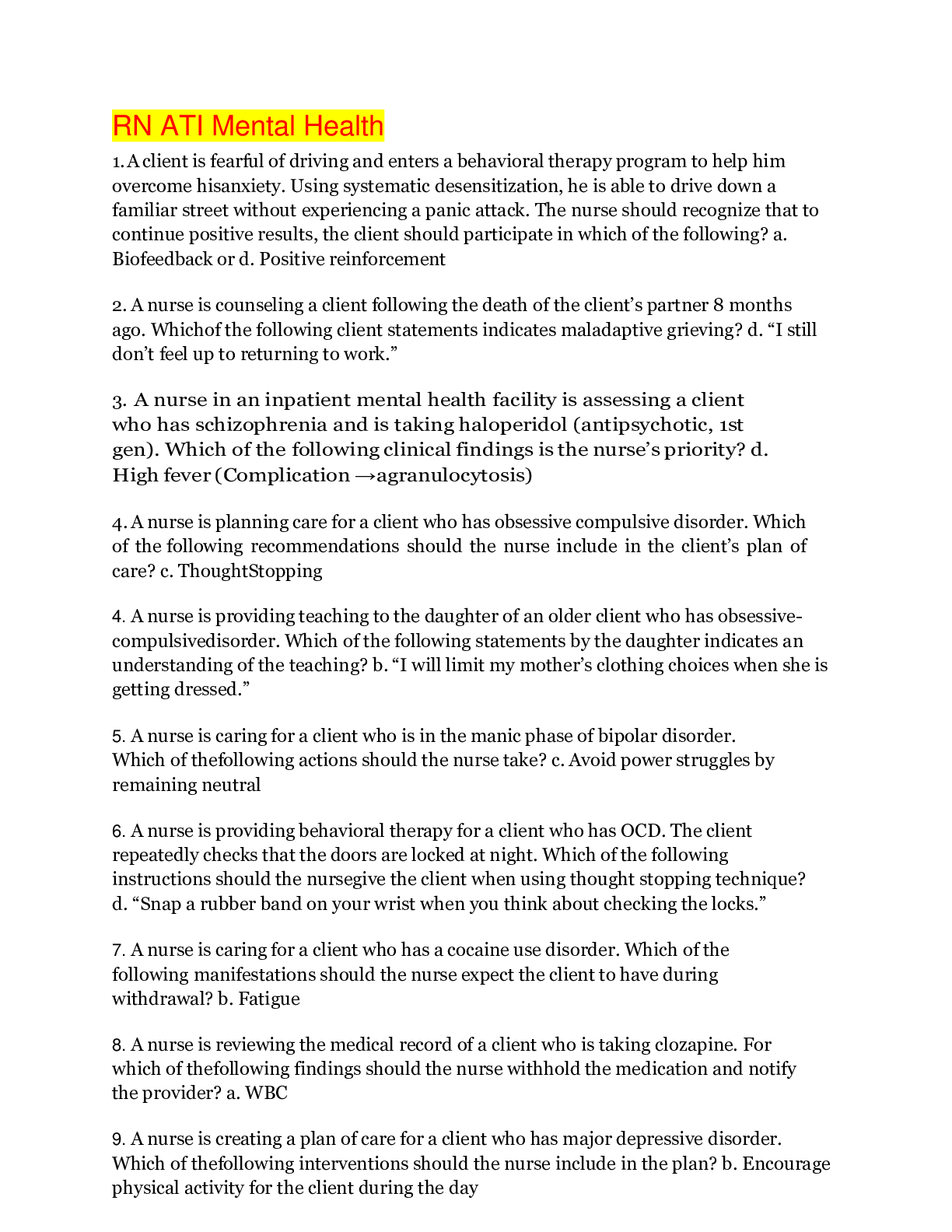
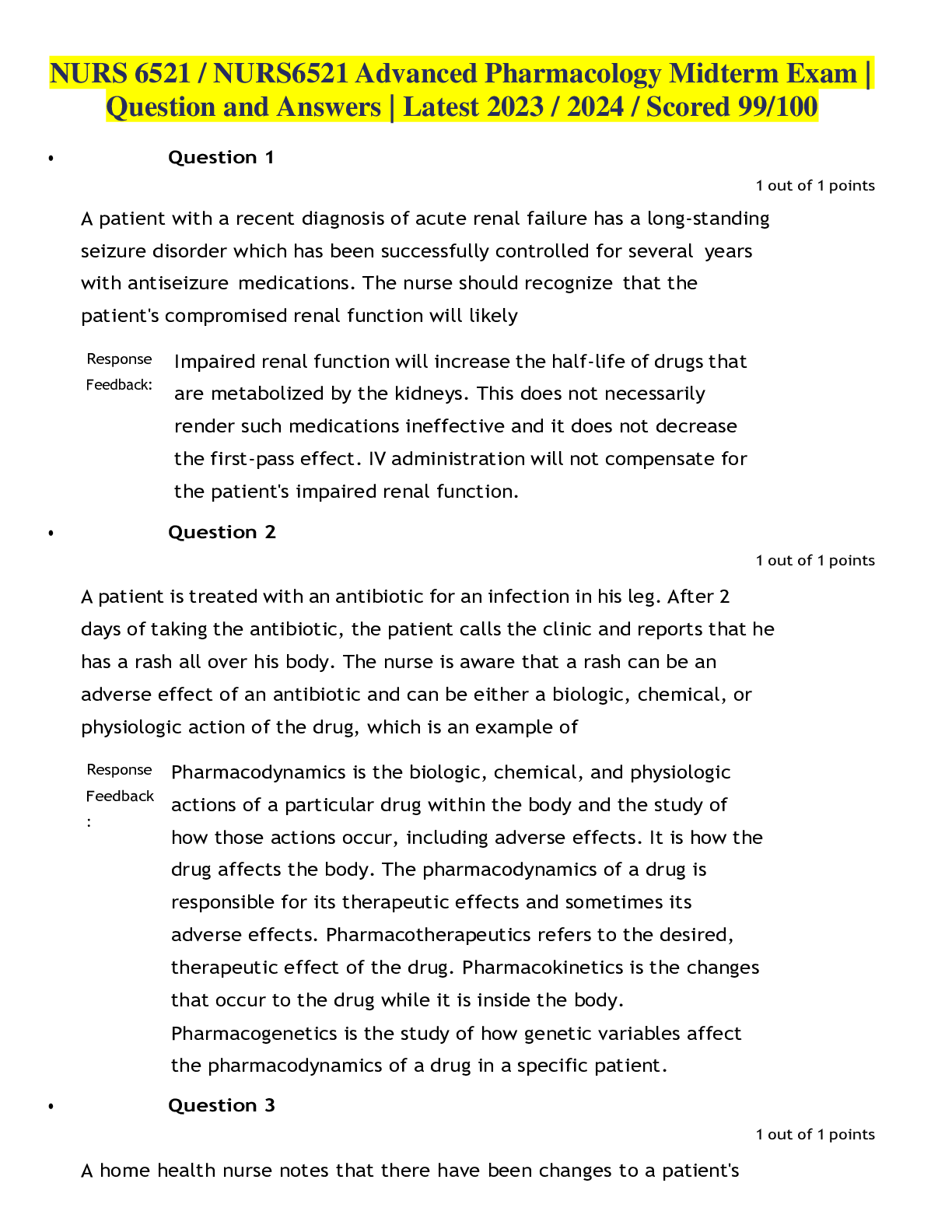
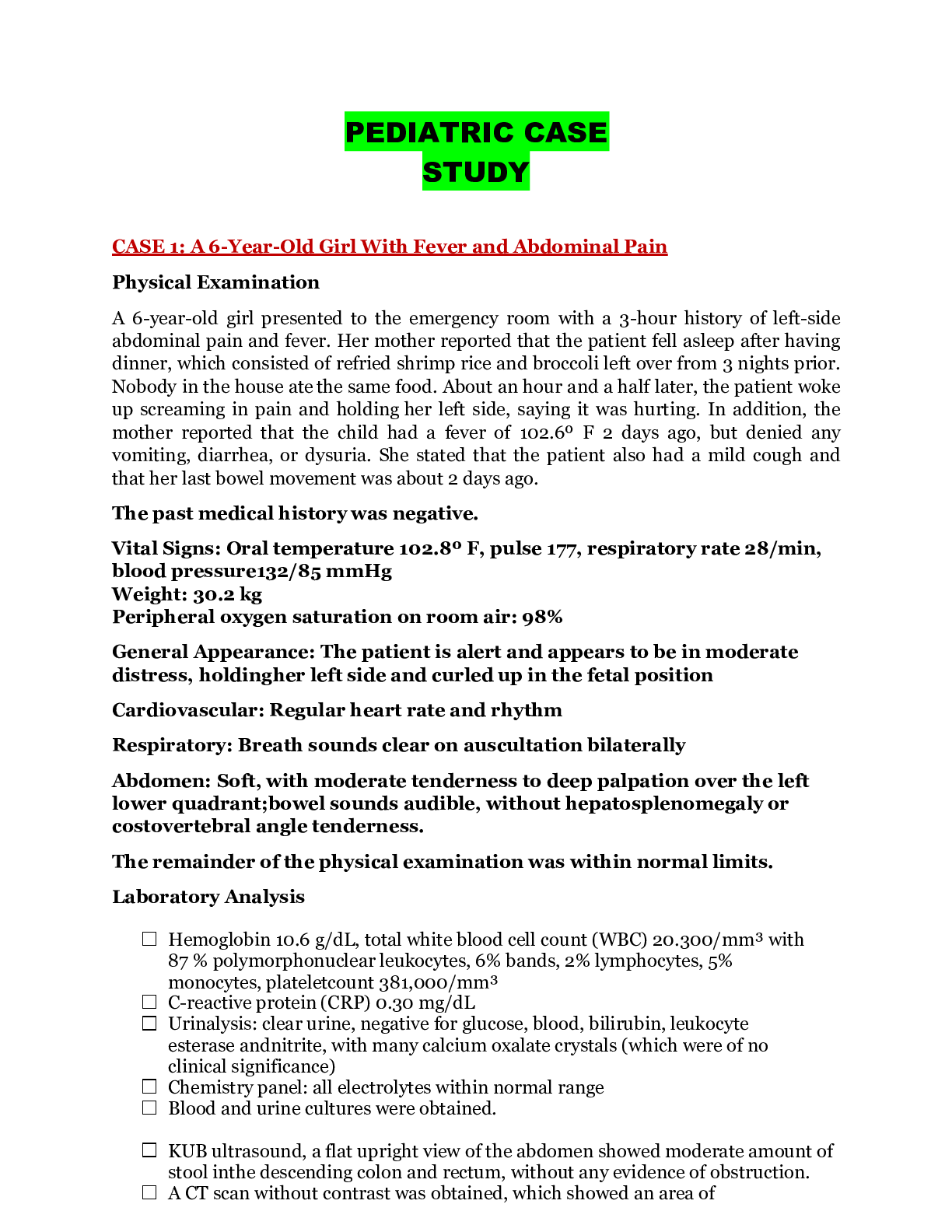
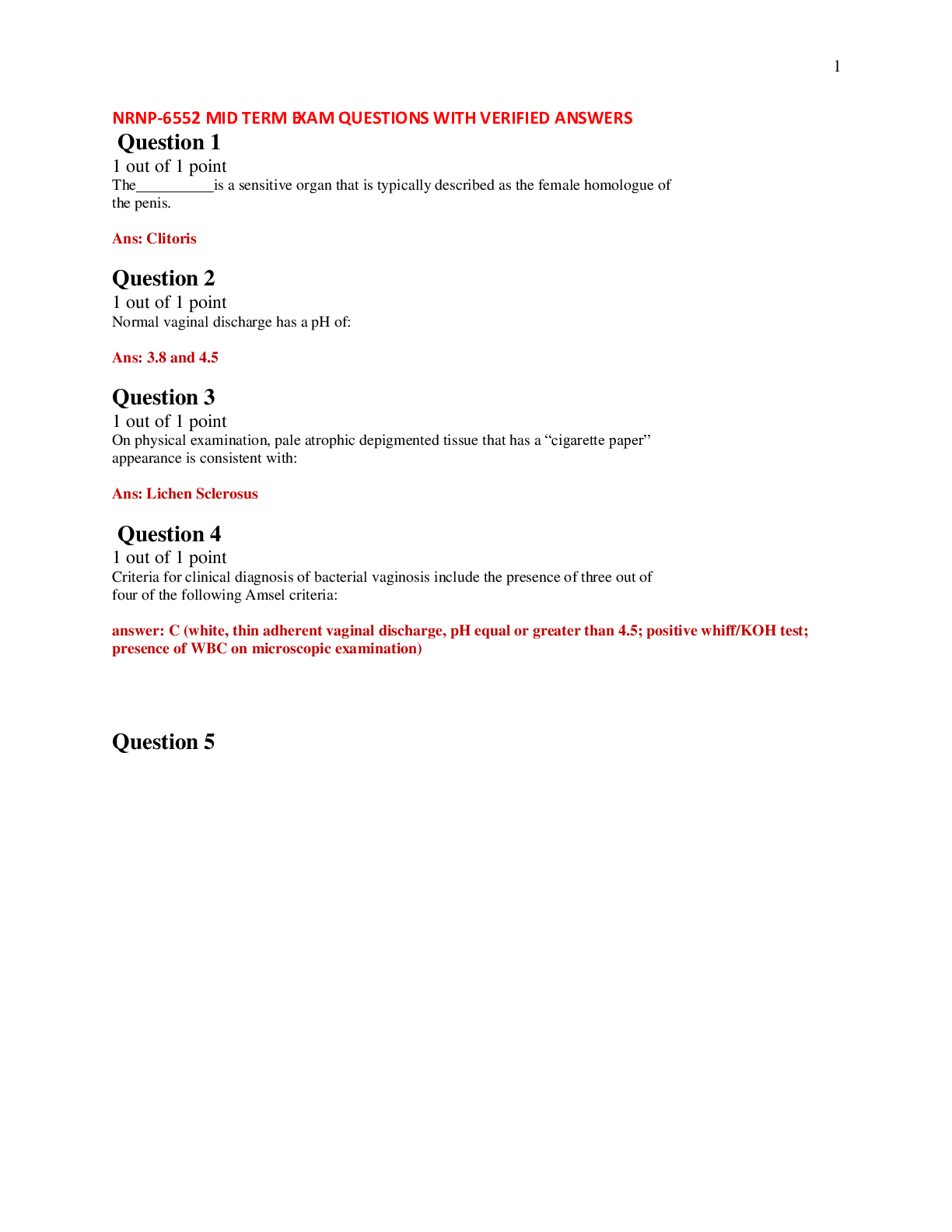
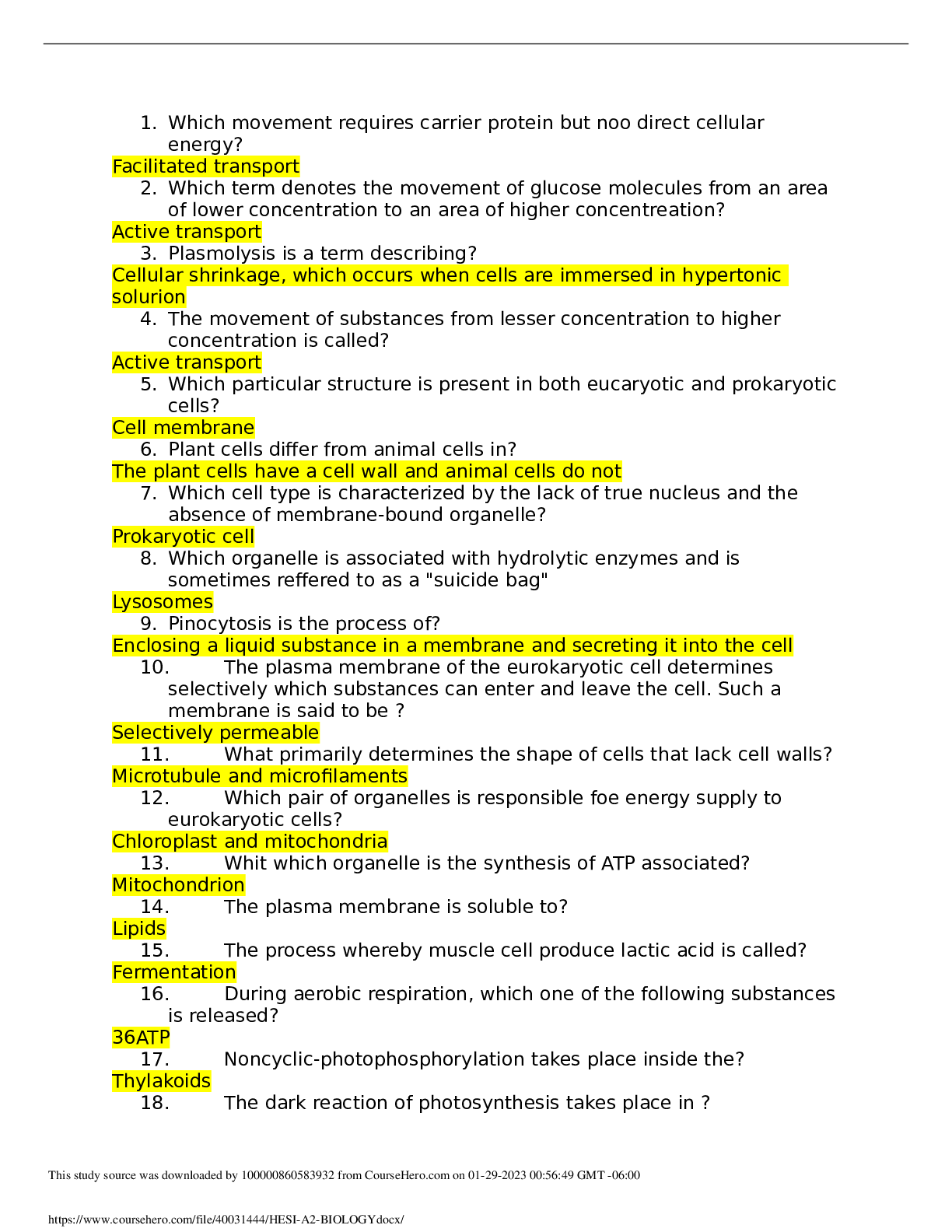
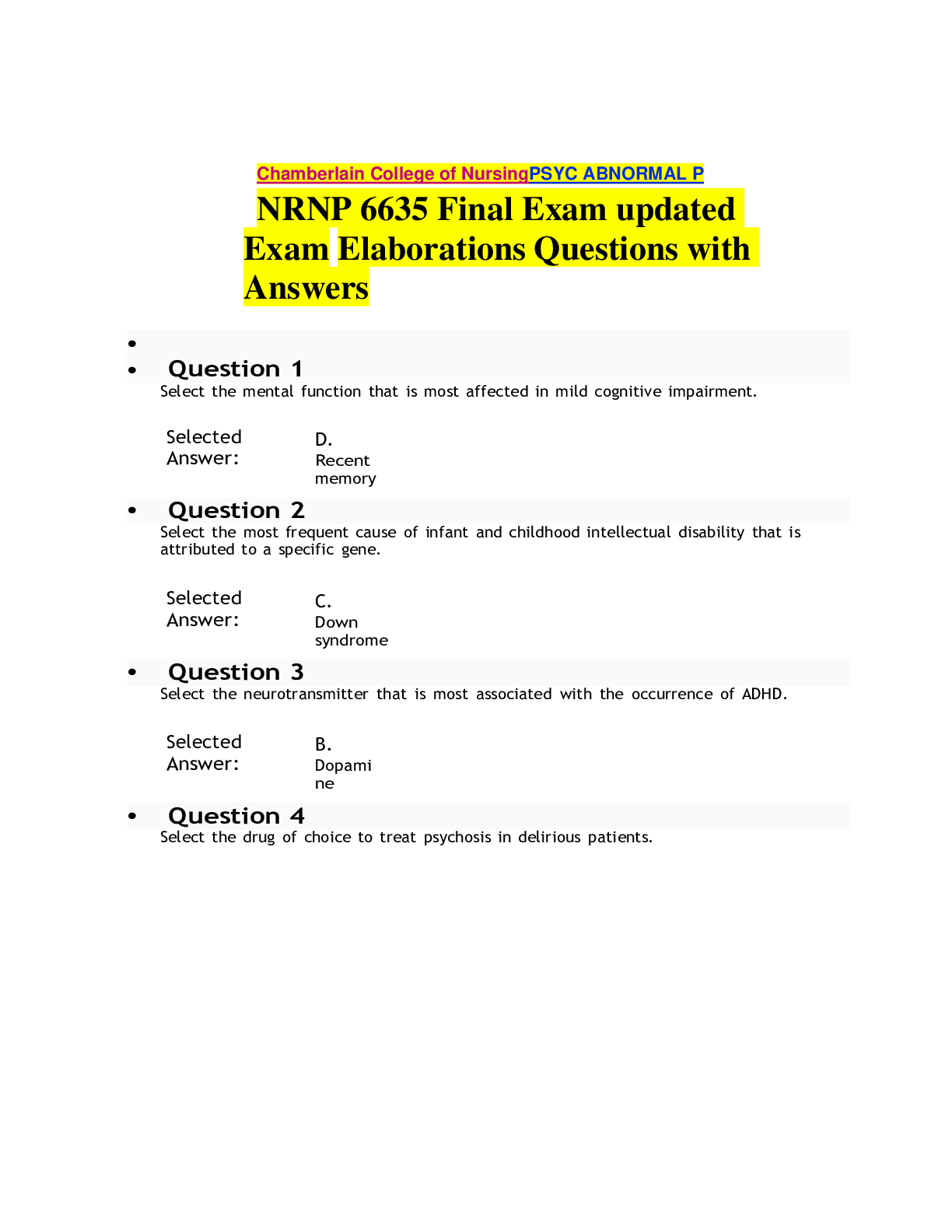
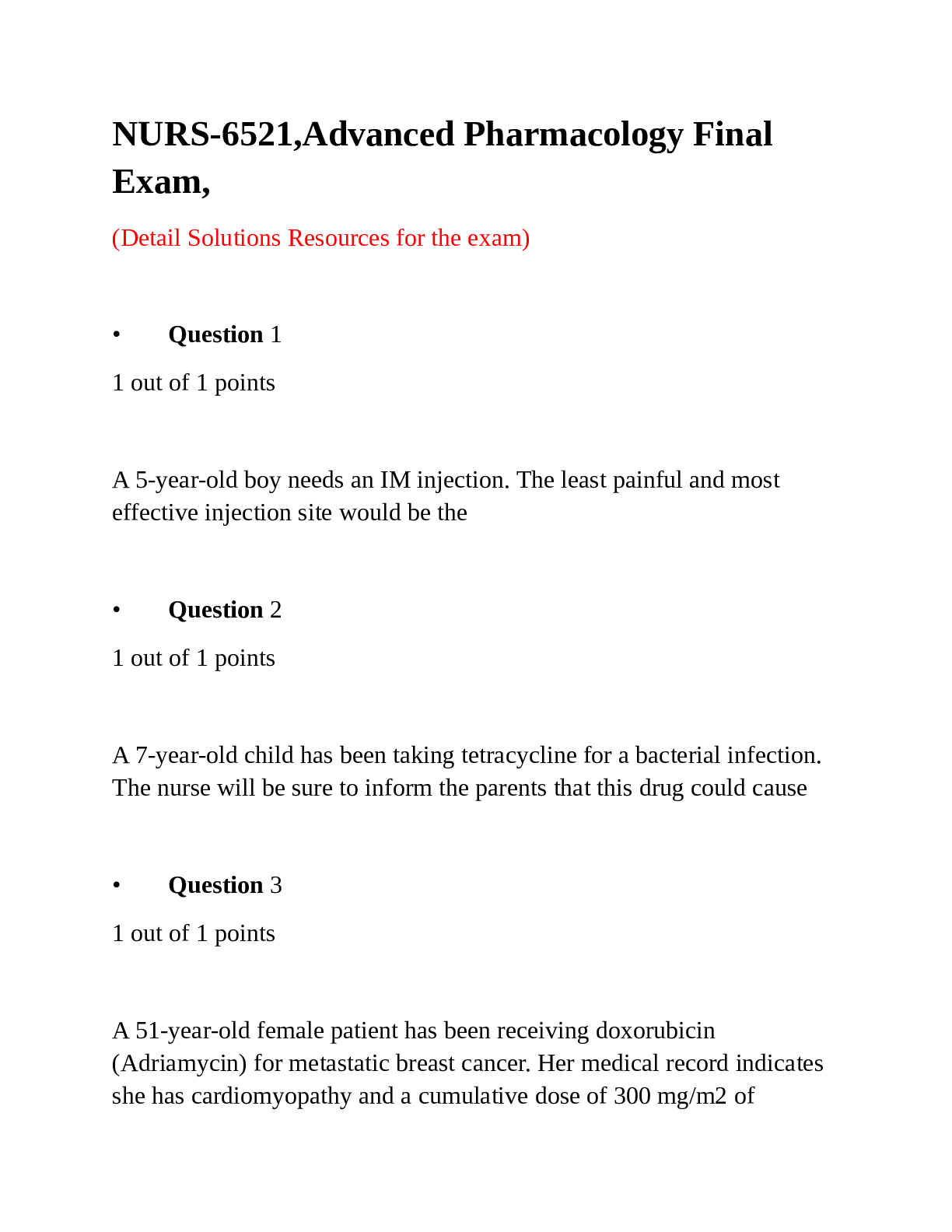
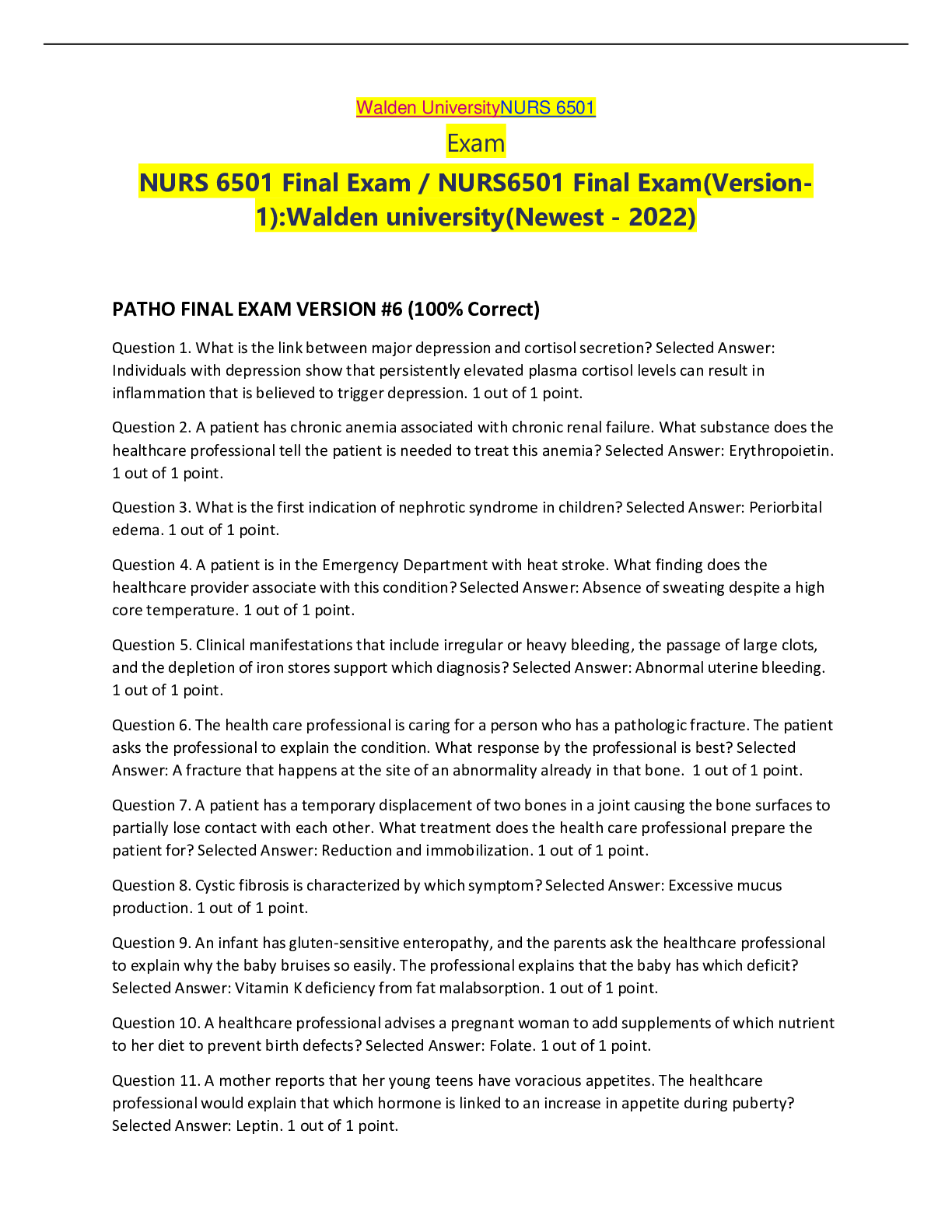
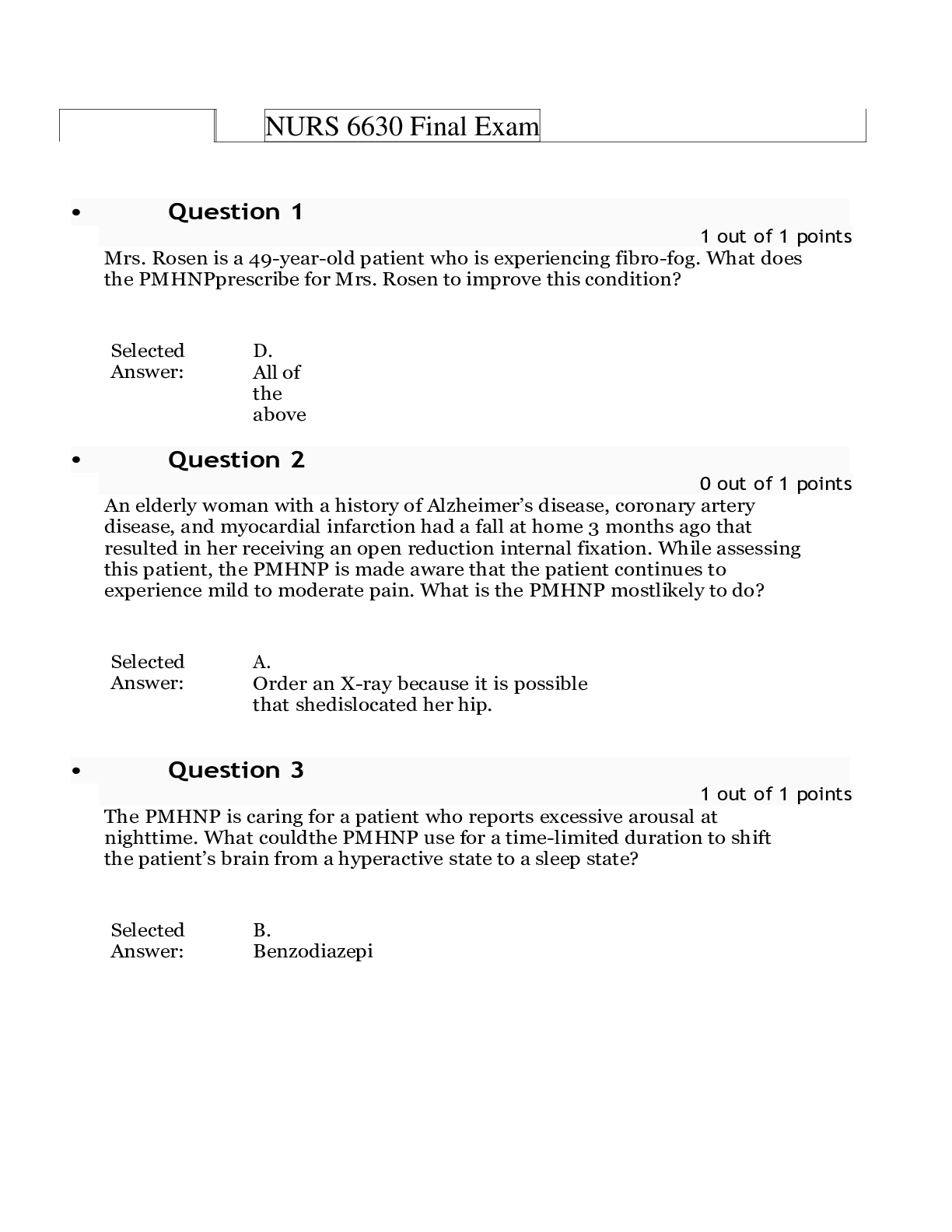
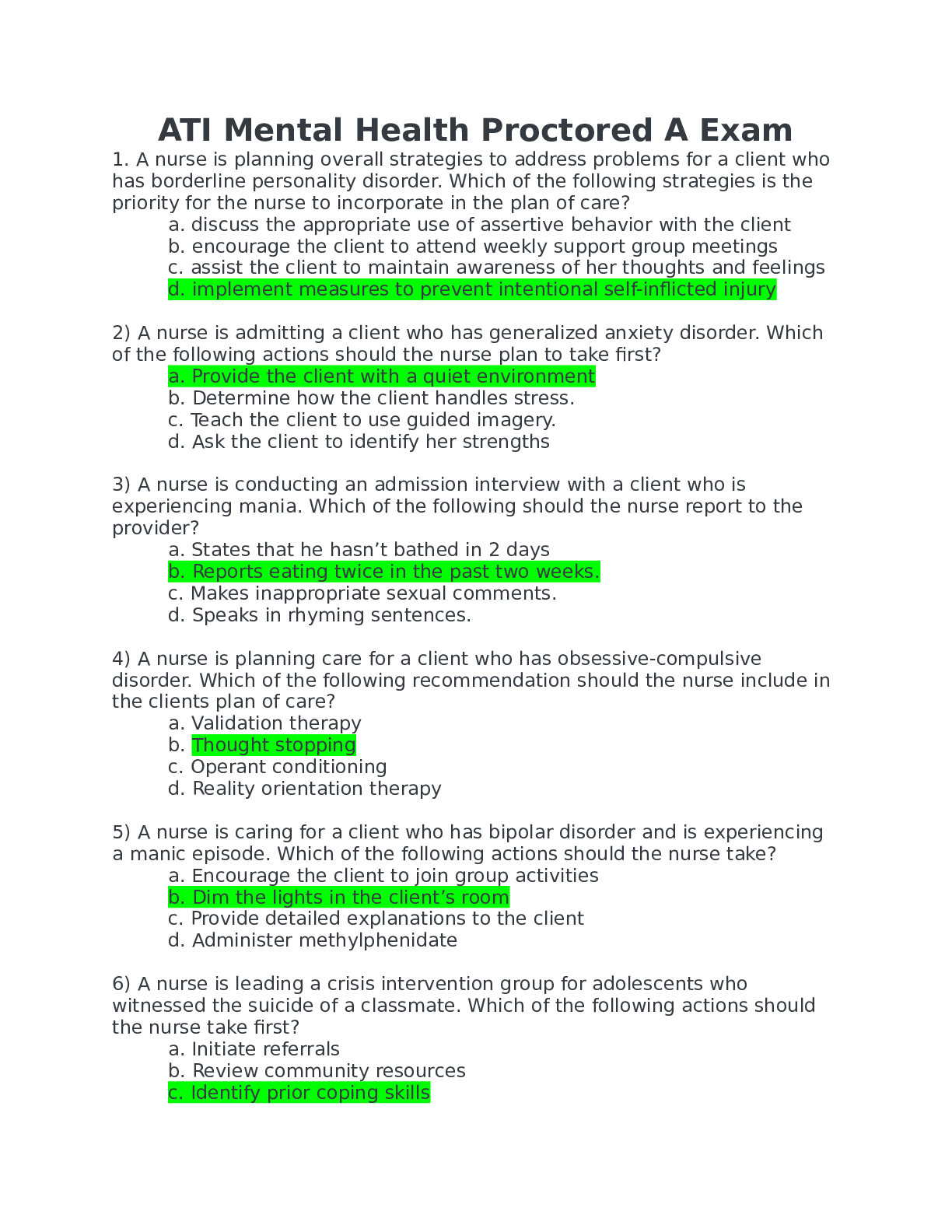

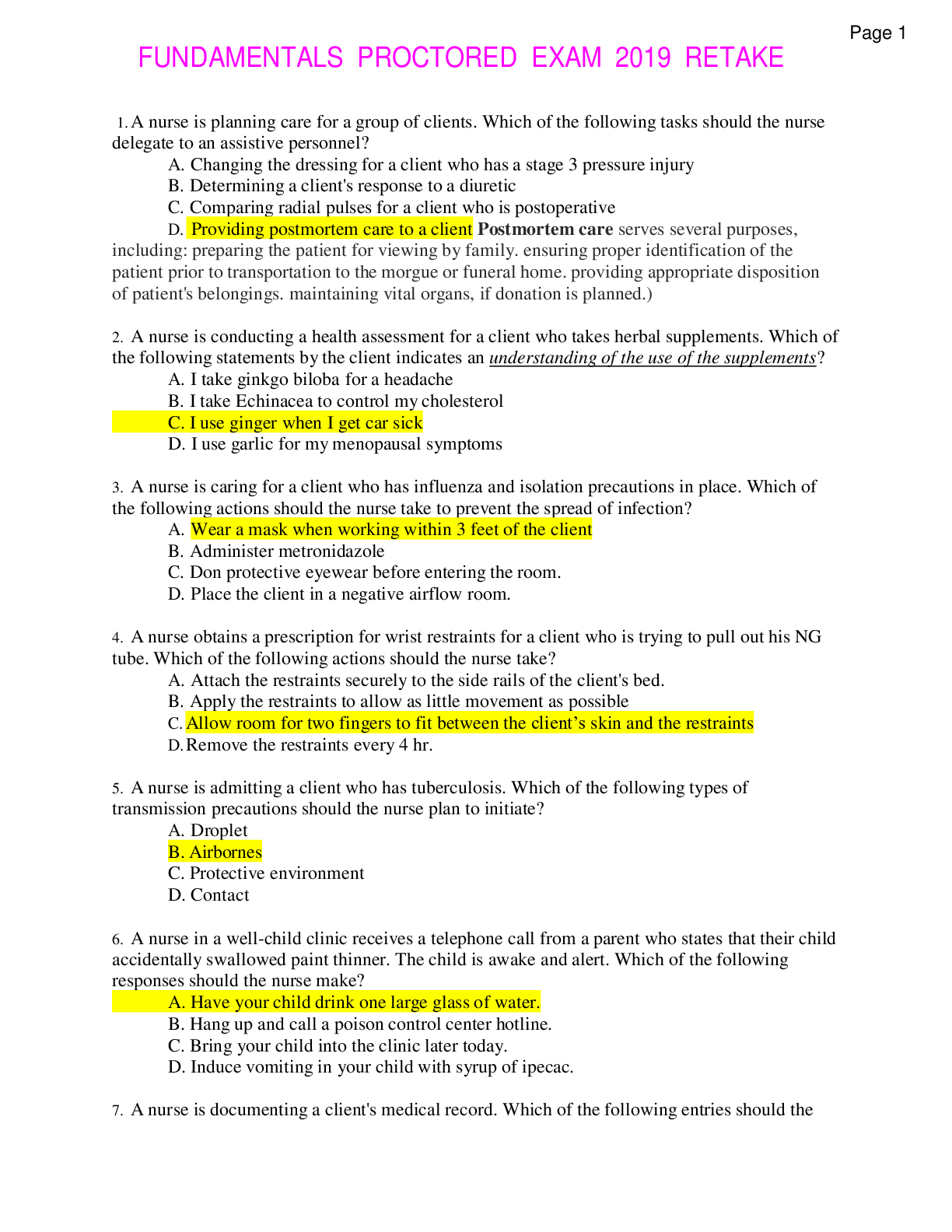
.png)

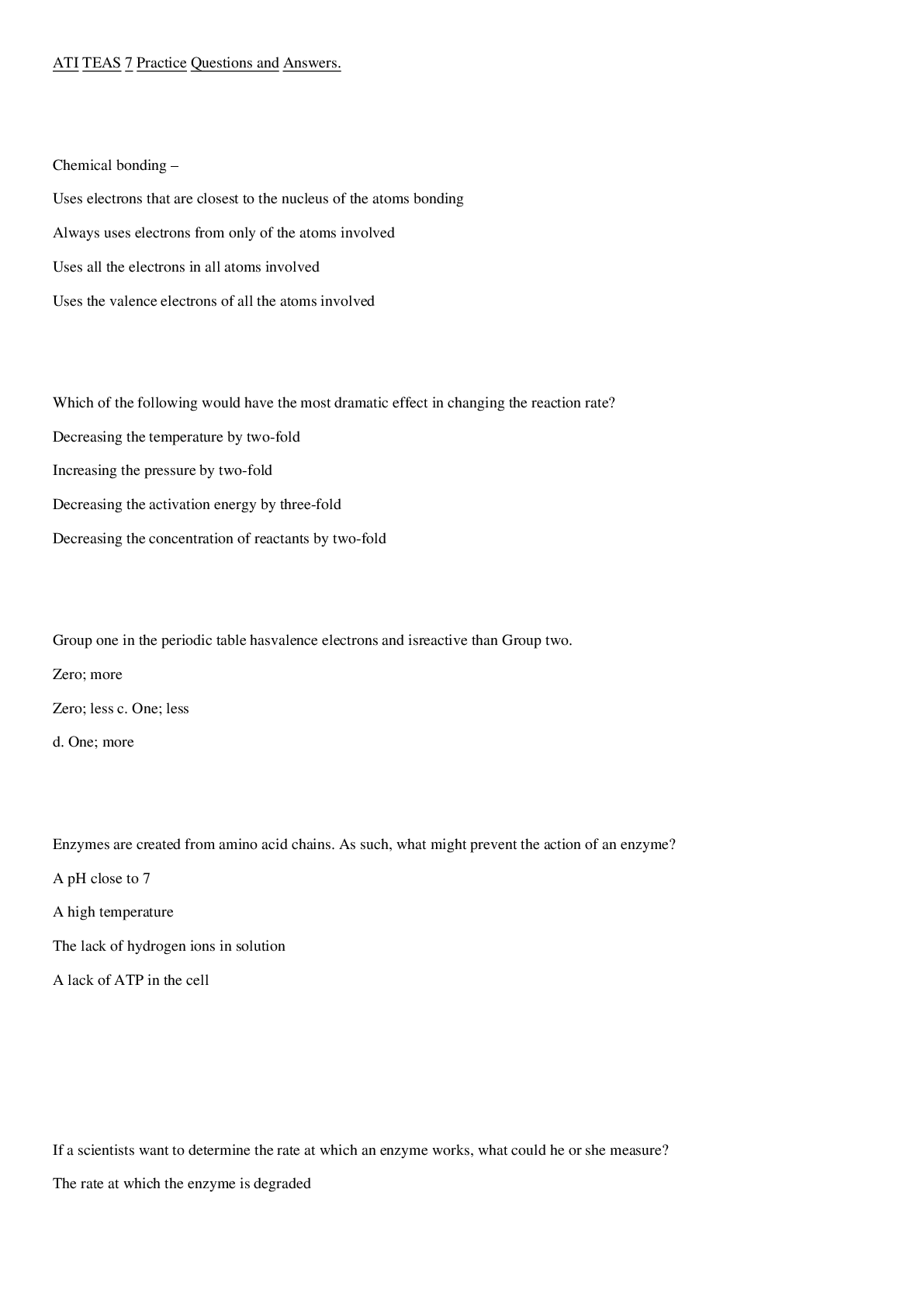

.png)
